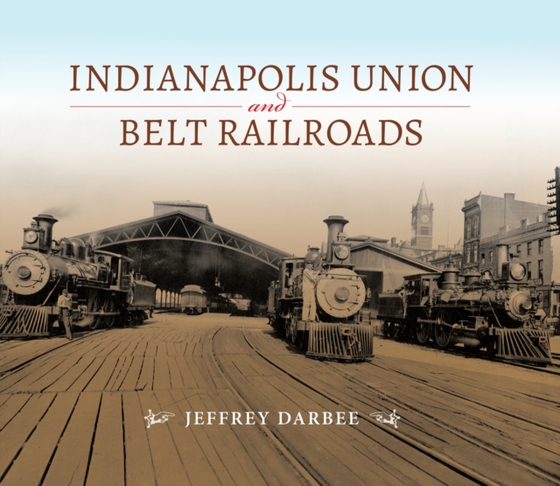
Indianapolis Union and Belt Railroads e-bog
127,71 DKK
(inkl. moms 159,64 DKK)
A comprehensive history of how railroads aided in the growth of Indiana and its capital city, featuring maps and illustrations.In an era dominated by huge railroad corporations, Indianapolis Union and Belt Railroads reveals the important role two small railroad companies had on development and progress in the Hoosier State. After Indianapolis was founded in 1821, early settlers struggled to mov...
E-bog
127,71 DKK
Forlag
Indiana University Press
Udgivet
21 august 2017
Genrer
1KBBN
Sprog
English
Format
pdf
Beskyttelse
LCP
ISBN
9780253029508
A comprehensive history of how railroads aided in the growth of Indiana and its capital city, featuring maps and illustrations.In an era dominated by huge railroad corporations, Indianapolis Union and Belt Railroads reveals the important role two small railroad companies had on development and progress in the Hoosier State. After Indianapolis was founded in 1821, early settlers struggled to move people and goods to and from the city, with no water transport nearby and inadequate road systems around the state. But in 1847, the Madison & Indianapolis Railroad connected the new capital city to the Ohio River and kicked off a railroad and transportation boom. Over the next seven decades, the Indiana railroad map expanded in all directions, and Indianapolis became a rail transport hub, dubbing itself the "e;Railroad City."e; Though the Pennsylvania and the New York Central Railroads traditionally dominated the Midwest and Northeast and operated the majority of rail routes radiating from Indianapolis, these companies could not have succeeded without the two small railroads that connected them.In the downtown area, the Indianapolis Union Railway was less than two miles long, and out at the edge of town the Belt Railroad was only a little over fourteen miles. Though small in size, the Union and the Belt had an outsized impact, both on the city's rail network and on the city itself. It played an important role both in maximizing the efficiency and value of the city's railroad freight and passenger services and in helping to shape the urban form of Indianapolis in ways that remain visible today."e;A good history book explains why things are the way they are. This is a great history book, neatly telling the value of railroads in the development of the United States as well as in Indianapolis. Footnotes and bibliography combined with maps and ephemera and photos of everything from track construction to buildings to locomotives make it of interest to architects and engineers as well as rail fans and Hoosier history buffs. It's a super tour guide, too."e; -Cynthia L. Ogorek, coauthor of The Chicago & Western Indiana Railroad"e;An interesting history not only of these two railroads but how they ultimately served as a model for the many other belt railroads . . . [The book discusses] how and why railroads transformed Indianapolis into a major city; in fact, the largest U.S. city not on navigable water."e; -Tom Hoback, Owner, Indiana Rail Road Company
 Dansk
Dansk

